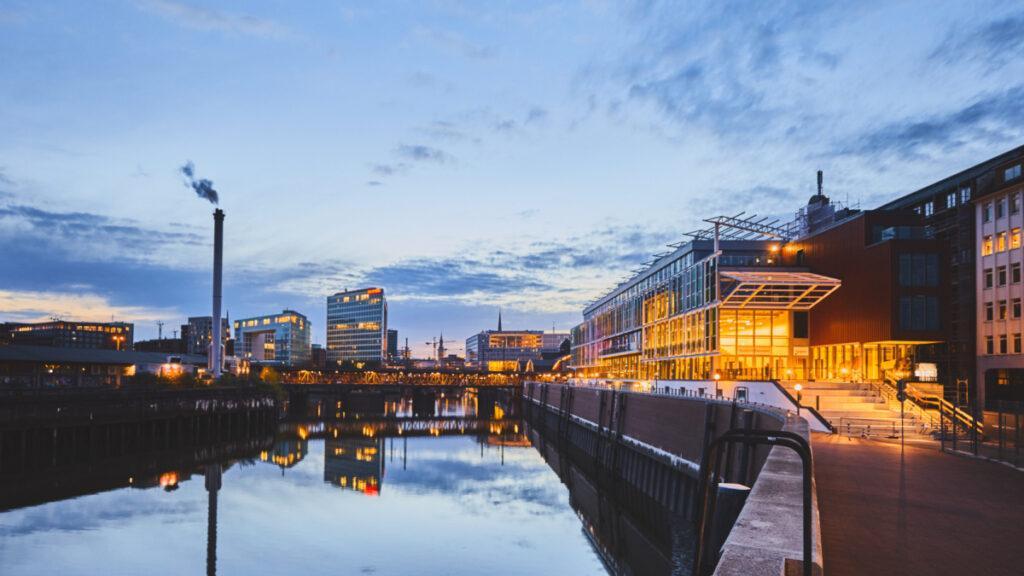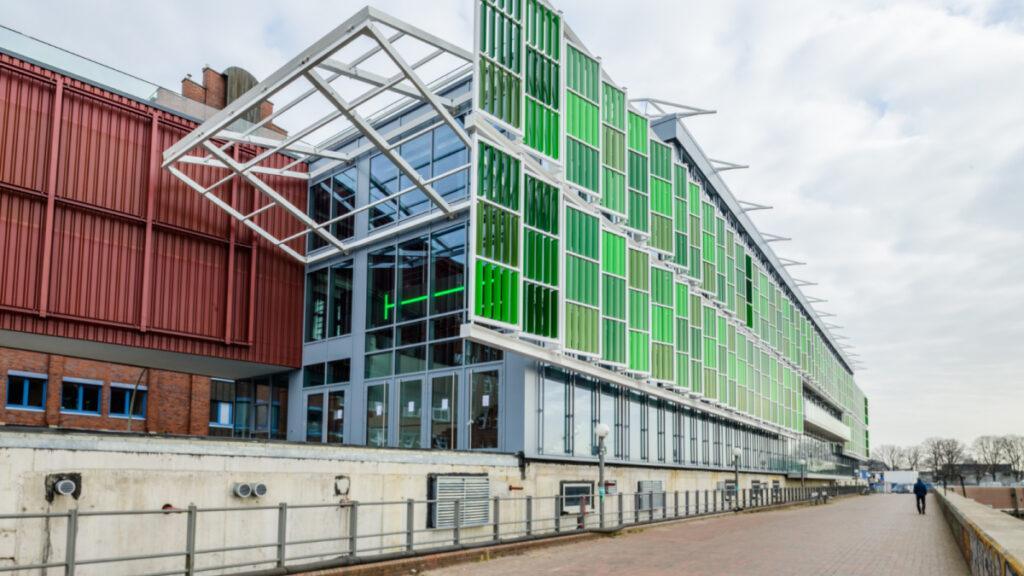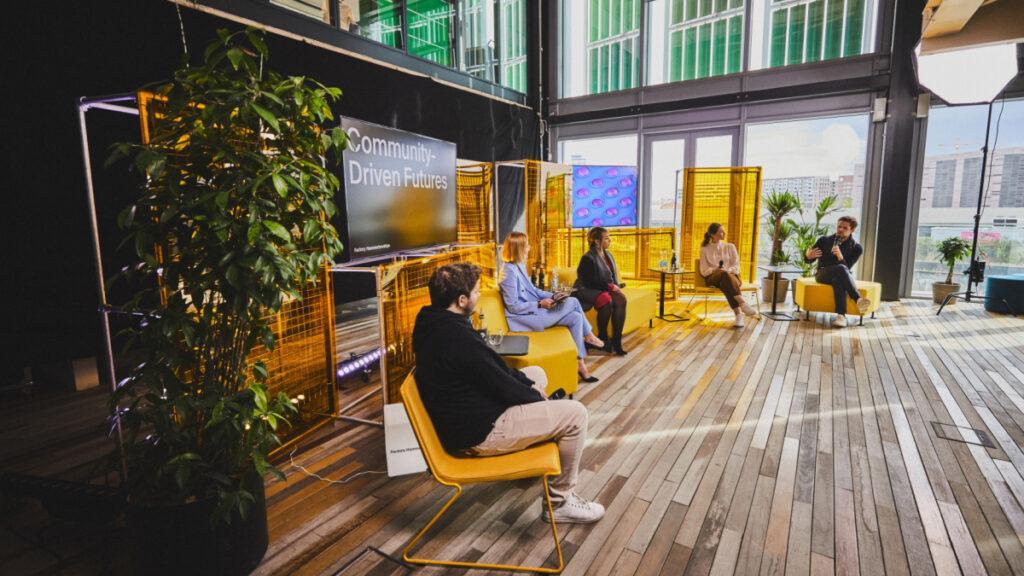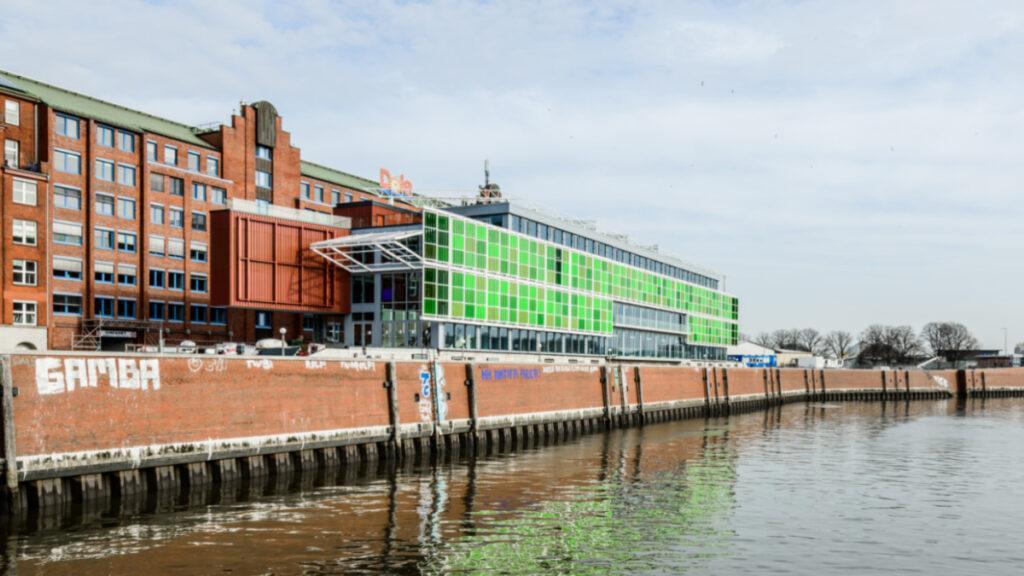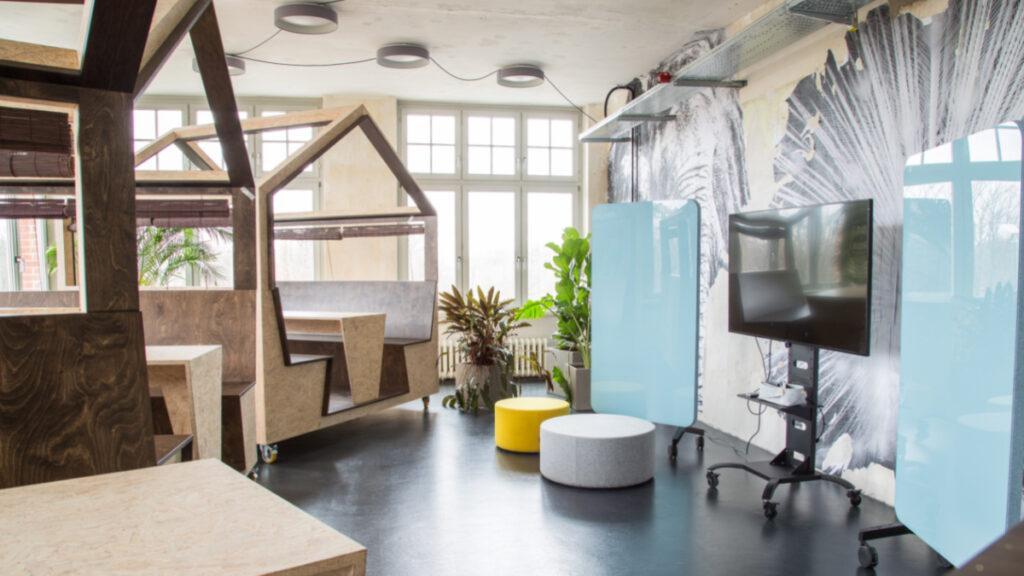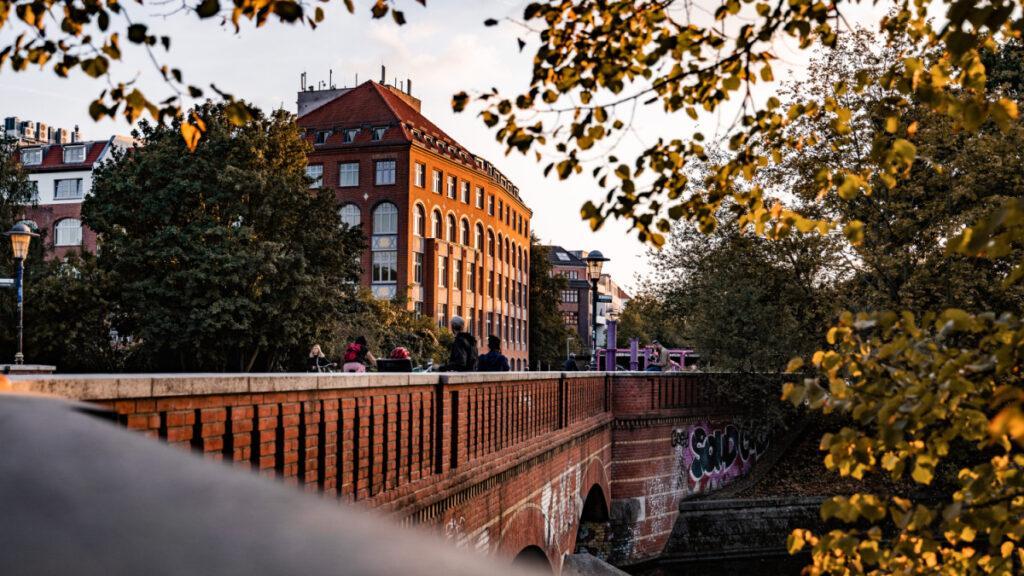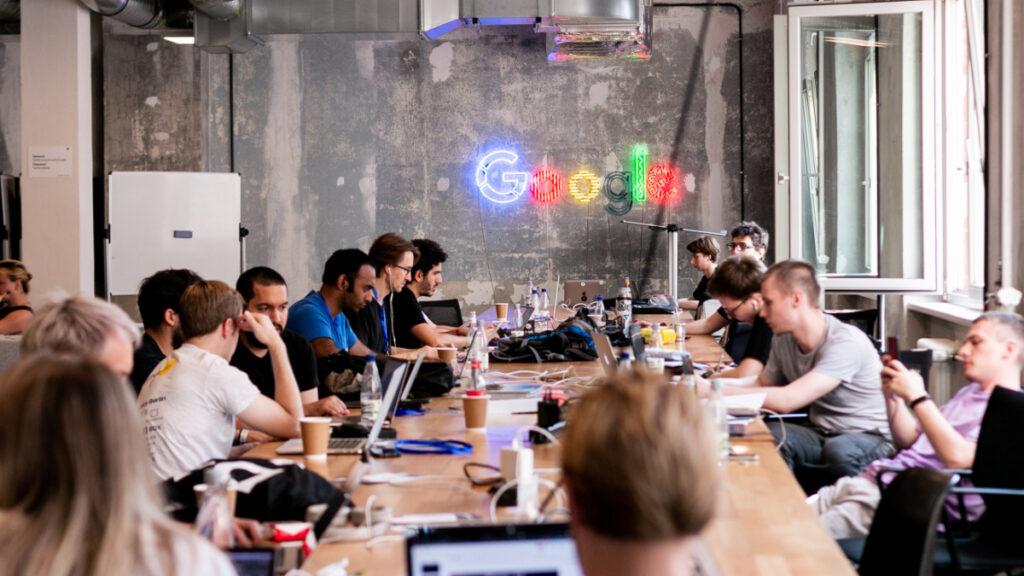New Work from New York
The new co-working space Hammerbrooklyn in Hamburg is designed to be a place of inspiration and creativity. Besides its passion and dedication, this curated community thrives on a desire for innovation and thirst for the future.
Upcycling – in other words, finding different ways to use discarded objects – is in vogue right now. Old fish food bags are turned into cool rucksacks. And subway escalators become tables and benches. So why shouldn’t a former Expo building resurface as one of Germany’s most buzzing office spaces?
Showcase project
The USA Pavilion for the Expo 2015 in Milan was heavily criticized at the time. The steel frame construction is reminiscent of the gamblers’ paradise Las Vegas owing to its gaudy illumination. But it completely missed the mark as far as sustainability is concerned. However, after the building was dismantled in 2017, carried across the Alps, and reassembled 1,100 km away in Hamburg, the building designed by architect James Biber was suddenly transformed into a showcase project.
Since May 2021 the pavilion has been given a new lease of life on the picturesque Elbe canal, at Stadtdeich 2–4 to be precise. With a floor area of 7,317 square metres on five storeys, the Digital Pavilion is the beating heart of Hammerbrooklyn, a new think tank in this Hanseatic city in the north of Germany.
New life for old rooms
But the architectural romance doesn’t stop there: the wooden flooring laid throughout the building originally came from the state of New York. The planks used to be the Coney Island boardwalk, which was destroyed by Hurricane Sandy in 2012. They were washed up on the beach after the storm.
The Digital Pavilion also marks the beginning of a much larger project, and part of an ambitious urban development. As many as four more buildings are planned on the premises, providing an extra 55,000 square metres by 2028. One of these is the 14-storey Treetop Tower with its timber and glass facade. Of course, sustainability will play a major role in all the materials used. More specifically, a climate-neutral energy supply is designed to equip the building for the future.
Smart building with extensive sensor technology
The ground floor of Hammerbrooklyn contains (or plans to contain) labs, creative offices and recording studios. Levels 1 to 4 are home to co-working spaces, plus some open-plan spaces and also project/seminar rooms. Finally, right at the top on Level 4 visitors can enjoy a leafy roof terrace. The Digital Campus also includes a town hall that hosts events with up to 800 people.
Hammerbrooklyn is a smart building with extensive sensor technology and a whole host of interfaces for the internet of things (IoT). For instance, the oxygen content in the building is measured precisely and controlled, as is the temperature. And the positions of the tenants are also tracked using an in-house navigation system. Naturally without infringing on data privacy guidelines.
Collecting data in Hamburg
The purpose of these activities is to collect as much data as possible using different kinds of technology, in order to use it all in other areas. A special app (developed by Pinestack) helps with networking the community, forming groups, renting spaces and planning events.
Granted, people who come from outside Hamburg may find the name Hammerbrooklyn slightly odd. But all becomes clear if you take a closer look at the site location – in the district of Hammerbrook with its many little Elbe canals neighbouring on the Old Town and the HafenCity.
Risen from the ashes
Hammerbrook belongs to the district of Hamburg-Mitte and was flattened by allied bombs in 1943. After the end of World War II, the area was left uninhabited for a long time and was practically empty. But then in the 1980s it was transformed into an up-and-coming office location, named City Süd.
Connected by a sense of awakening, hope, the turn of an era.
Hammerbrooklyn
However, there is more to the name that just its wordplay: Hammerbrooklyn is designed to build a bridge between the old world – Hamburg – and the new world with its limitless opportunities – New York.
No longer a dream
Indeed, as their website emphasizes: “connected by a sense of awakening, hope, the turn of an era”, no other name could describe this ambitious project more accurately. “Here, the city of the future is no longer a dream but already a reality. The place is not about ideas as an end in themselves, but instead about tackling and implementing them.”
One of Europe’s leading campus operators, Factory Berlin, fuels the innovation at Hammerbrooklyn. Two locations in major cities enable over 150 start-ups (and partners such as Google for Startups, Siemens and Audi) from more than 70 countries to find space for creative innovations. Current and former tenants include Twitter, Uber and SoundCloud.
New worlds in Hammerbrooklyn
Factory Berlin – and also its Hamburg office Hammerbrooklyn – is run by the two CEOs Martin Eyerer, a cool techno DJ, and Nico Gramenz, a former business development manager at Siemens Mobility. The think tank owes its name to Andy Warhol’s legendary 1970s “Factory” in New York, and thus a place where unconventional collaborations allowed new worlds to emerge.
Nico Gramenz is aware of why creative cells such as Factory and Hammerbrooklyn are also relevant for major global enterprises: “They are increasingly looking to join our network, in the knowledge that we have incubators which will test their partially outdated business models and processes to see how they will perform in the future. I spent many years at Siemens myself, and so I know large structures can respond very sluggishly to innovation and change.”
Curated community
To achieve this, adds his colleague Eyerer, it simply isn’t enough to rent out office space. The key to their success is offering a community that is curated: “We are looking for people with a desire for innovation and a thirst for the future who are prepared to play an active part in contributing to the network and sharing knowledge. This effect isn’t achieved by simply providing tables and chairs, and then renting them out. It goes without saying that the rooms are part of it all, but our business is mainly about bringing people together and putting together a relevant social network.”
We are looking for people with a desire for innovation and a thirst for the future.
Martin Eyerer
In the past months, one important component on the route to establishing a suitable network was sadly lacking. However, slowly but surely this will return and once again lead to success: Factory Berlin hosted about 400 events per year before the pandemic. Martin Eyerer briefly summarizes the philosophy and hope for the future of networked working: “Enthusiasm is created when things just ‘click’. This happens best at events. Because good people bring other good people with them.”
Text: Hannes Kropik
Translation: Rosemary Bridger-Lippe
Images: Hammerbrooklyn, Factory Berlin, Julia Schwendner
